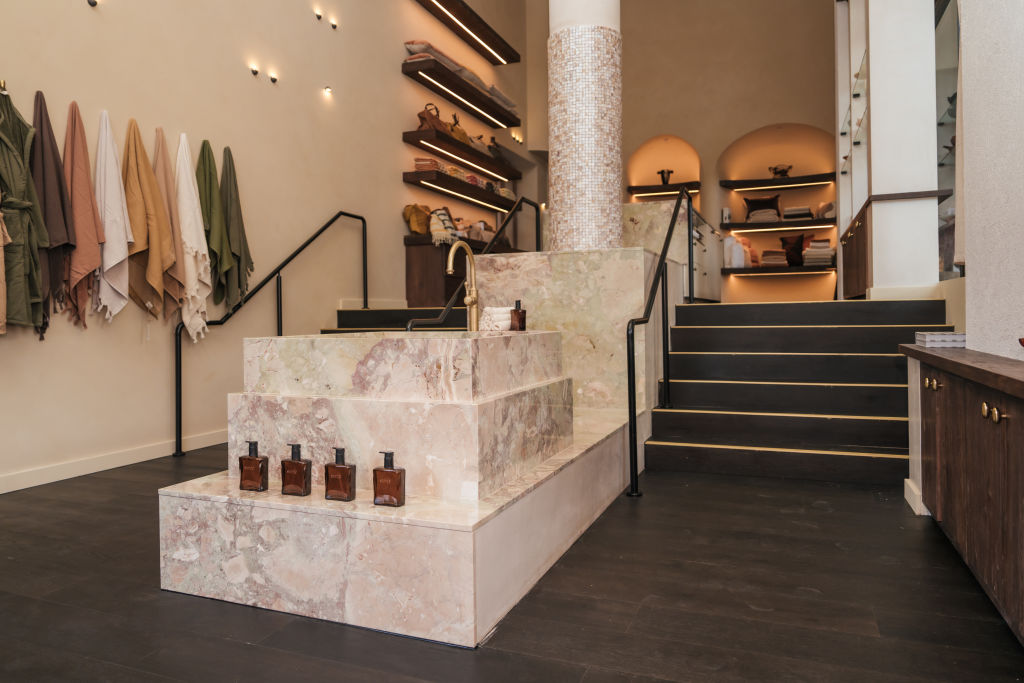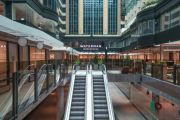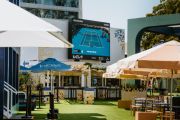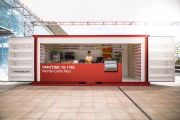
The luxury effect: how premium shopping is transforming retail spaces
The so-called “experience economy” has inspired a new wave of premium shopping destinations, where customers can get up close and personal with brands.
In an era of digital saturation, shoppers are returning to bricks and mortar stores, seeking to be enthralled and engaged, and to go beyond basic transactions, experts say.
Such “brand love” and loyalty convert to purchases, research shows.
Discretionary spending has trended upwards over the past five years, according to CBRE’s latest Luxury Retail Australia report, and has been forecast to improve as interest rates fall.
Luxury retail in Australia reached record trade of $6.2 billion in 2023, last year’s report shows. Since then, many more brands have unveiled upmarket stores where customers can touch and try products, sip a cocktail, order lunch, and get one-on-one advice.
Menswear retailer Rodd & Gunn recently opened its debonair global flagship in Melbourne’s CBD, with a members’ lounge, bar, cafe and cellar, over four levels. It follows the opening of Mecca’s glamorous Melbourne flagship, a 3700-square-metre beauty haven of scent sommeliers, skin diagnostics and a piercing studio.
Camilla Franks, known as the kaftan queen, won an accolade this year for her interactive fashion boutiques. Customers journey through a “Hotel of Curiosity” – at the centre is a vintage train carriage, artisanal fixtures, and a champagne bar. The concept won best store design at the Australian Fashion Industry Awards.
“Social media has reframed the store as a stage,” marketing specialist Judith Silva says. “If a space isn’t visually compelling or story-driven, it risks being forgettable both in real life and online.”
Brands are in the market for high-visibility spaces, especially in prestigious shopping centres, to make their business come alive, Sam Embling, CBRE’s Pacific director of retail tenant representation, says.
“Demand for premium shopping centres remains strong, particularly those that have evolved into lifestyle destinations,” he says. “These centres offer more than just retail; they provide curated experiences, dining, wellness, and entertainment, which makes them highly attractive to both consumers and brands.
“A flagship store in the right spot can act as a brand billboard, a community hub, and a conversion tool all at once.”
Luxury home and body brand Saardé opened its first flagship store in Sydney’s Surry Hills in December last year. Visitors are invited to indulge in a “hand-washing ritual” at a marble basin, and sip champagne or iced tea while browsing the shop, designed by interiors studio The Stella Collective.
Saardé’s chief executive, Shenol Kizek, refers to customers as “guests”.
“They’ve made the effort to come to our store when they could have bought online, so whether they buy or not, I want their time with us to feel elevated and personal,” he says.
“They can feel that we genuinely care, that nothing is rushed or transactional, and that every detail has been considered for them. That’s rare today, and it’s what keeps them coming back. When someone comes to Saardé, it’s not only because they want to buy soap or textiles; I really believe they are coming in the store firstly to experience the beautiful store design and atmosphere.”
Silva, the head of consumer and lifestyle PR at agency We Are Brooklyn, says younger consumers are driving a rise in the “experience economy”. Gen Z and Millennials want meaning behind their purchases, she says.
Brands as varied as Range Rover, Lune Croissanterie, and Aesop are bringing emotion back to shopping in an age of digital overload.
“After years of swiping, scrolling and one-click checkouts, customers are craving tactile experiences that reintroduce touch, atmosphere, and genuine interaction,” Silva says. “In today’s retail landscape, simply being present isn’t enough – you need to be felt.”
Research and strategy director Stephanie Attill, from Monash Business School’s Australian Consumer and Retail Studies unit, says consumers have rising expectations of in-person shopping, and brands are working harder than ever to compete.
Customers are more likely to be devoted to retailers with whom they have an intimate connection.
“A well-executed, immersive retail experience increases dwell time, which can lead to more sales, as longer visits generally correlate with increased purchases and higher spending per visit,” Attill says.
“Research suggests that strong self-brand connections with a specific brand weakens consumers’ consideration of competing brands, in turn increasing brand love – that is, emotional attachment to a brand – followed by increasing willingness to pay for the specific brand.”










